Europe honours LCD screen pioneer Martin Schadt
- Published
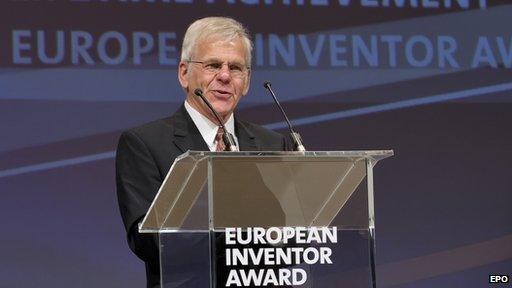
Dr Schadt says LCD has a long future ahead of it despite other screen technologies
Liquid crystal displays have become so ubiquitous that it is easy to take them for granted.
But one of the key players in LCD's development says the innovation wasn't "highly regarded" in its early years. Martin Schadt isn't exaggerating.
In 1970 the Swiss physicist achieved a breakthrough that would pave the way for LCD read-outs at first on calculators, watches and alarm clocks, and then flat-panel TVs, laptops and smartphones.
But one year later his employer, Roche, thought the feat was a mismatch with its other pharmaceutical-focused efforts and canned the project.
Thankfully, the decision proved short-lived and Dr Schadt helped the firm become a major supplier to the screen-making industry, as well as making further contributions to the technology's evolution.
His admirers know him as the "father of the pixel", and this week the European Patent Office gave him its lifetime achievement award, noting that sales of devices featuring LCD panels totalled $120bn (£80bn) in 2012.
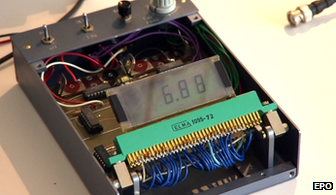
Dr Schadt developed a prototype display to prove his theory could be used to make low-power LCD displays
On learning of the news, the 74-year-old stressed that "many people" had contributed to the technology.
But he also wanted to make clear it was too soon to say if the innovation would be eclipsed by rival organic light-emitting diode (OLED) screens.
Low voltage
Liquid crystals are unusual. Unlike most substances they can hover in an intermediate state between being a solid and a liquid.
They were first discovered in 1888 by a botanist studying carrots who extracted a compound that appeared to have two melting points. At the first it softened and became milky, at the second it turned transparent.
In the 1960s, researchers at RCA Laboratories in Princeton, New Jersey used the finding to create the first basic LCD screen. It used an electrical charge to make liquid crystals scatter light, causing the display to take on the appearance of a frosted glass window.
However, the effort had drawbacks.
"It required current flow so power consumption was an issue, the current degraded the electrodes which limited the lifetime of the device, and the voltages required were relatively high," Dr Schadt tells the BBC.
"So when we started looking at alternatives to this effect we wanted a device with low power consumption, which had a low operating voltage and offered much better contrast."
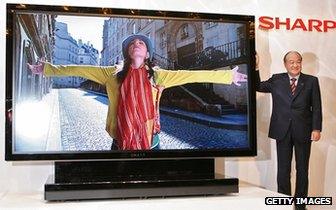
Sharp unveiled a record-sized 108in (274cm) TV in 2007
Dr Schadt achieved his goal at Roche in 1970 with the help of another physicist, Wolfgang Helfrich.
They proved that by using electrical jolts the spiral molecular structure of LCD crystals could be "unwound" causing them to block light, and then "re-twisted" so that they became see-through again.
The voltage required to achieve this was much lower than expected, meaning the effect could be produced with an ordinary battery.
"This was a surprise - we expected from theory [to need] much higher voltages of about 50 volts," Dr Schadt says.
"What I found was that only three volts was needed to get very high contrast.
"But such an experimental finding is often the case in physics - you have a vague idea how things should operate and then you find they operate differently."
Pixel pioneer
The men called the process the twisted nematic effect.
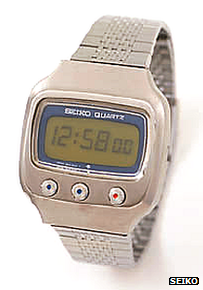
Seiko licensed Roche's tech to launch the 06LC watch in 1973
By placing a layer of liquid crystals between two plastic surfaces coated in a grid of transparent electrodes, and then applying electricity, they discovered they could create individual "pixels" which could be used to draw shapes.
They filed a patent for the idea in Switzerland on 4 December 1970 and published a paper in the journal Applied Physics Letters, external four days later.
Although this was to prove highly influential to other LCD researchers, Dr Schadt says the use of organic substances in electronics remained an "exotic" idea to others.
As a result Roche underestimated the value of its team's discovery and cancelled the project. Dr Schadt switched disciplines and spent the next two years studying biological reactions including the effects of a drug given to chickens.
It was only when watchmaker Seiko offered to buy his LCD patent in 1973 that Roche reconsidered.
The Japanese company was attracted by the fact the technology only needed a few microwatts of power per square centimetre to function, making it suitable for wrist-worn displays
Although Roche opted not to make LCD screens itself, it realised the invention was too valuable to sell off, and decided to license the technology to Seiko and others.
It also reformed its liquid crystal research division and put Dr Schadt in charge, cutting short his brief stint in medical research. The unit was later spun off as an independent company, Rolic, where Dr Schadt served as chief executive until he retired in 2002.
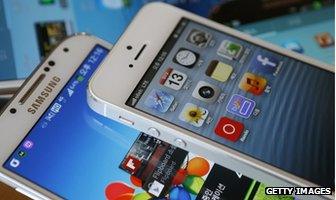
Apple's iPhone 5 features an LCD screen, but Samsung's Galaxy S4 uses an OLED display
Over his three decades at the helm he helped tailor LCDs to suit consumers' needs.
"To make it commercial one had to find and discover new liquid crystals," he says.
"The target was to find molecules which gave you a specific display performance.
"For example a TV display has to have very fast response times which is not necessary in a watch. Or in an automotive display you need a very broad temperature range... which would not be required in an iPhone, for instance."
LCD v OLED
Among the 110 patents registered to Dr Schadt's name, one sticks out: a 1969 document detailing his work on an organic light-emitting diode screen.
He abandoned the research in favour of liquid crystals, but now LG, Samsung and others are promoting OLED TVs as the superior option.
Deep-pocketed customers are promised brighter colours, deeper blacks, thinner screens and lower electricity bills.
However, Dr Schadt isn't convinced OLED screens will ever match LCD equivalents for price or lifespan.
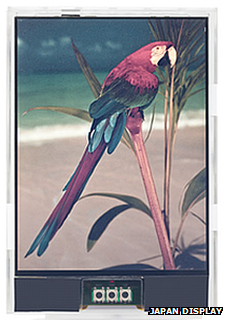
Japan Display's reflective LCD screen offers extended battery life
"The blue OLED materials are not as stable as the red OLED materials," he says.
"So if you have an RGB display the blue colour will age differently from the red and green ones and this will change the colour quality of the display.
"The question has not yet been answered whether OLED will be stable over 50,000 hours to prevent the consumer seeing any deterioration in the appearance of the screen."
He adds that a new type of "reflective LCD" screen also promises to beat OLED displays at energy efficiency.
The technology uses light from the surrounding environment instead of a backlight to illuminate its liquid crystals. The result resembles a thin e-reader display capable of playing back colour videos.
"I just came from a conference in Vancouver where there was a presentation of prototypes by the Japan Display Consortium which showed a beautiful 6in LCD display with a power requirement of only two milliwatts," Dr Schadt says.
"It will be very very competitive with e-ink."
- Published29 April 2013
- Published10 January 2013
- Published4 January 2013